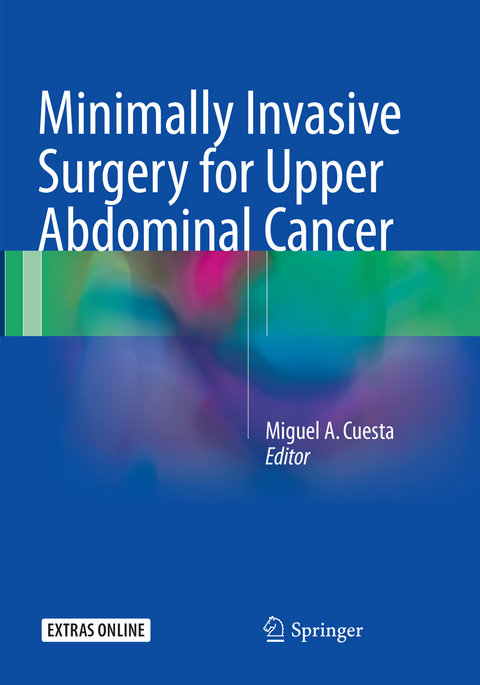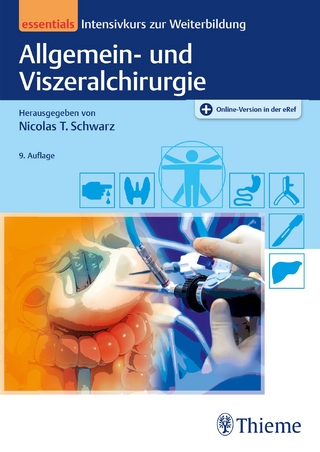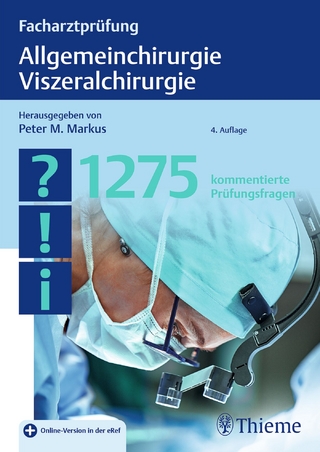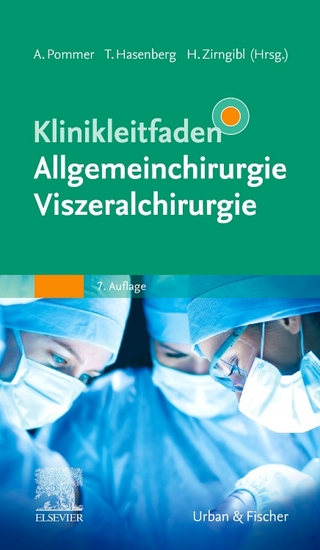
Minimally Invasive Surgery for Upper Abdominal Cancer
Springer International Publishing (Verlag)
978-3-319-85366-6 (ISBN)
The book bases its approach on the information gathered by MIS observation and the step-by-step descriptions, by using illustrations and videos of surgical procedures for oncological resections of esophageal and gastric cancer, as well as for duodenum, pancreas, spleen and liver cancers.
Furthermore, this book will serve as a teaching guide, providing a present-day introduction to the increasingly sophisticated performance of surgery required by general and specialized surgical practitioners. The reader will have access to a practical book with relevant information that guides adequate treatment.
Miguel A. Cuesta is emeritus Professor of Digestive Surgery at the VUmc in Amsterdam, Netherlands. After his publication as editor in 1993 of the book “Minimally Invasive Surgery in Gastrointestinal Cancer”, considered as a pioneer work in the use of Minimally Invasive Surgery (MIS) in Oncological Surgery, his work has been focused on looking for evidence of MIS. He has participated and initiated different randomized controlled trials concerning Colorectal and Upper GI surgery comparing the Open and the MIS approaches. It has been a huge honor for him to be editor of this comprehensive book “Minimally Invasive Surgery for Upper Abdominal Cancer”, coordinating the work of 34 outstanding surgical oncologists and their groups.
Part 1: Advantages of Minimally Invasive Surgery.- Advantages of Minimally Invasive Surgery in Upper Abdominal Surgery.- Part 2: Esophagus and Gastro-Esophageal junction cancer.- Surgical Anatomy of Esophagus.- Endoscopic treatment of early esophageal cancer.- Neoadjuvant treatment of esophageal and gastro-esophageal cancer.- Transhiatal or Transthoracic esophagectomy.- Open or Minimally Invasive Esophagectomy after neoadjuvant therapy.- Thoracoscopic radical esophagectomy for cancer.- Total or Hybrid Minimally Invasive Esophagectomy?.- Transthoracic approach by thoracoscopy: 3 or 2 stage?.- Minimally Invasive Approach of Gastro-esophageal Junction cancer.- Robot assisted Minimally Invasive Esophagectomy (RAMIE).- Minimally Invasive Esophagectomy step by step. How I do it.- Part 3: Gastric cancer.- Surgical anatomy of the lesser sac (omental bursa).- Neoadjuvant treatment of gastric cancer.- Open or Minimally Invasive Gastrectomy.- Minimally Invasive Surgery of Gastric Cancer.- Laparoscopic and Robot assisted gastrectomy.- Minimally invasive treatment of gastric GIST.- Minimally invasive gastrectomy step by step. How I do it.- Part 4 Duodenum-pancreas tumors.- Pancreatic resection after neoadjuvant treatment.- Open or Minimally Invasive Pancreatic Surgery?.- Laparoscopic Distal Pancreatectomy.- Hybrid Laparoscopic Duodenopancreatectomy.- Total Laparoscopic Duodenopancreatectomy.- Robot assisted partial pancreatectomy and duodenopancreatectomy.- Laparoscopic Duodenopancreatectomy step by step. How I do it.- Part 5 Liver tumors.- Open or Laparoscopic Liver resection.- Laparoscopic left lateral sectinectomy.- Laparoscopic techniques in Major Liver Resections.- Laparoscopic liver resection in cirrhotic patients.- Robotic Liver resection for malignancies.- Part 6 Spleen malignancies.- Minimally invasive splenectomy for Oncological Diseases of the spleen.- Part 7 How to learn these techniques?.- Mastering Major Minimally Surgery.- Part 8 Final considerations.- Final considerations.
"This is a well written book on the various minimally invasive approaches (including laparoscopic, hybrid, and robotic) for oncologic treatment of the major upper gastrointestinal organ systems, as well as the evidence regarding minimally invasive surgery compared to open. This is a must-have for surgical oncologists wishing to dive into minimally invasive surgery for the upper GI tract." (Daniel Budreau, Doody's Book Reviews, January, 2018)
“This is a well written book on the various minimally invasive approaches (including laparoscopic, hybrid, and robotic) for oncologic treatment of the major upper gastrointestinal organ systems, as well as the evidence regarding minimally invasive surgery compared to open. This is a must-have for surgical oncologists wishing to dive into minimally invasive surgery for the upper GI tract.” (Daniel Budreau, Doody's Book Reviews, January, 2018)
| Erscheinungsdatum | 05.03.2022 |
|---|---|
| Reihe/Serie | Minimally Invasive Surgery for Upper Abdominal Cancer |
| Zusatzinfo | XV, 368 p. 253 illus., 220 illus. in color. |
| Verlagsort | Cham |
| Sprache | englisch |
| Maße | 178 x 254 mm |
| Gewicht | 988 g |
| Themenwelt | Medizinische Fachgebiete ► Chirurgie ► Viszeralchirurgie |
| Medizinische Fachgebiete ► Innere Medizin ► Gastroenterologie | |
| Schlagworte | minimally invasive procedures • Oncological Resection • Optimal Imaging • Postoperative Complications • Surgical Anatomy |
| ISBN-10 | 3-319-85366-X / 331985366X |
| ISBN-13 | 978-3-319-85366-6 / 9783319853666 |
| Zustand | Neuware |
| Haben Sie eine Frage zum Produkt? |
aus dem Bereich


